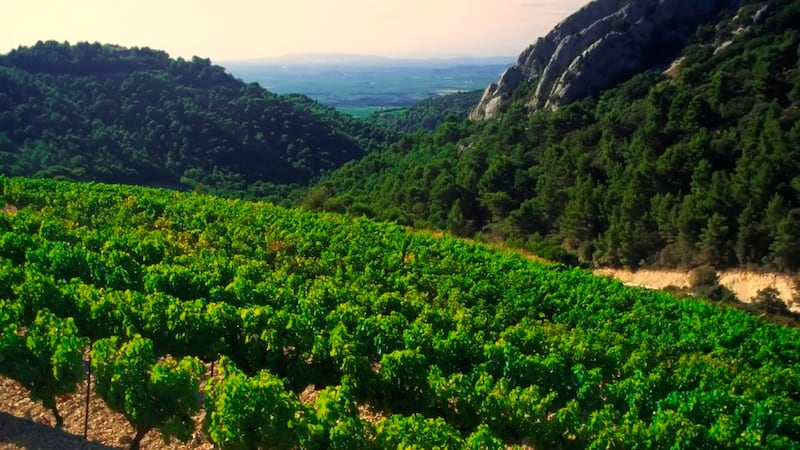For my late father, the real France began only once his train from Paris passed through Mâcon in the south of Burgundy. It was then that the roof tiles changed to terracotta, the sun really began to shine and you started to see the dry, bushy terrain of the garrigue. He would certainly have travelled through the southern Rhône valley on his annual trip to Provence.
This is an area of real interest to wine lovers as it can offer some of the best-value wines of France. It is not really a valley, more a vast expanse of sun-baked rocky terrain dotted with charming ancient hillside villages. The southern end blends into Provence, but doesn’t attract as many tourists, so it is great for those seeking a peaceful holiday. Its Roman remains are of great interest to anyone keen on archeology.
In contrast to the northern Rhône, where most of the wines are pure syrah, those of the south are almost blends. Grenache is the heart and soul of virtually every wine and a host of other varieties, mainly carignan, syrah, and mourvèdre provide the backbone.

Typical southern wines are warming and full. They may not be the most elegant, but they make up for that with a generosity and warming drinkability that is perfect on these cold winter nights.
The best wines, such as Châteauneuf-du-Pape, bear comparison with the finest France produces and many of these attract high prices. The more modest wines, in the right hands, can offer great value and make the perfect partner for a simple steak frites or a hearty stew.
If the southern Rhône has a problem, it is one of too much rather than too little. While other parts of France may struggle to achieve sufficient sugar levels, grenache only ripens at 14.5-15 per cent alcohol, levels that appeal to some, but make other wine drinkers look elsewhere. Not only are wines made with grenache high in alcohol, but they tend to be light in colour and tannins, hence the need to blend with other grape varieties. In Châteauneuf-du-Pape there are famously 13 permitted varieties. However a typical southern Rhône would have 60-80 per cent grenache, with syrah and/or mourvèdre plus a little carignan making up the remainder. These provide colour, tannins and an extra touch of complexity, although some of the greatest Châteauneuf- du-Pape are in fact 100 per cent grenache. It all depends on the soil.
The Rhône is one of largest wine regions of France. To me cheap Côtes du Rhône somehow seems less offensive than inexpensive wines from other regions, possibly due to the smoothing effects of grenache. All of the major supermarkets offer their own versions, though most are fine if unexciting. Superquinn’s Collection Côtes du Rhône is by far the best. But acceptable as these may be, the Rhône has so much more to offer for a euro or two more.
The region is full of talented small producers making idiosyncratic wines often at very keen prices. I find the artwork does not always match the wine however. For some reason, the Rhône seems to have more than its fair share of hideous labels that often seem designed to deter the prospective buyer.
Côtes du Rhône is the most basic appellation, but a good producer’s Côtes du Rhône is often superior to a better name from a lesser source. Côtes du Rhône Villages is made from lower yields. Some 18 villages have the right to append their name to the appellation. At the top of the tree are a small group of communes that have proved themselves to the relevant authorities and have the right to their own name and appellation. Châteauneuf-du-Pape is the most famous, but Gigondas, Vacqueyras, Rasteau, Cairanne, Sablet, and others are capable of producing excellent wines.
Each should have a distinctive style. Gigondas tends to be tannic and sometimes a little wild; Rasteau full-bodied and baked, Cairanne more elegant and Vacqueyras open-knit and so on. Much depends on the grower, his soils and the mix of grape varieties.
With the colder months ahead, this is a region well worth investigating for good-value winter wines. From November 25th-30th, Ireland’s first Rhône Week will take place, with a series of tastings and other events around the country. Winemakers from the region will come over to take part, joining a group of restaurants, wine shops and off-licences in the festivities. See rhonewineweekireland.com for details.
















